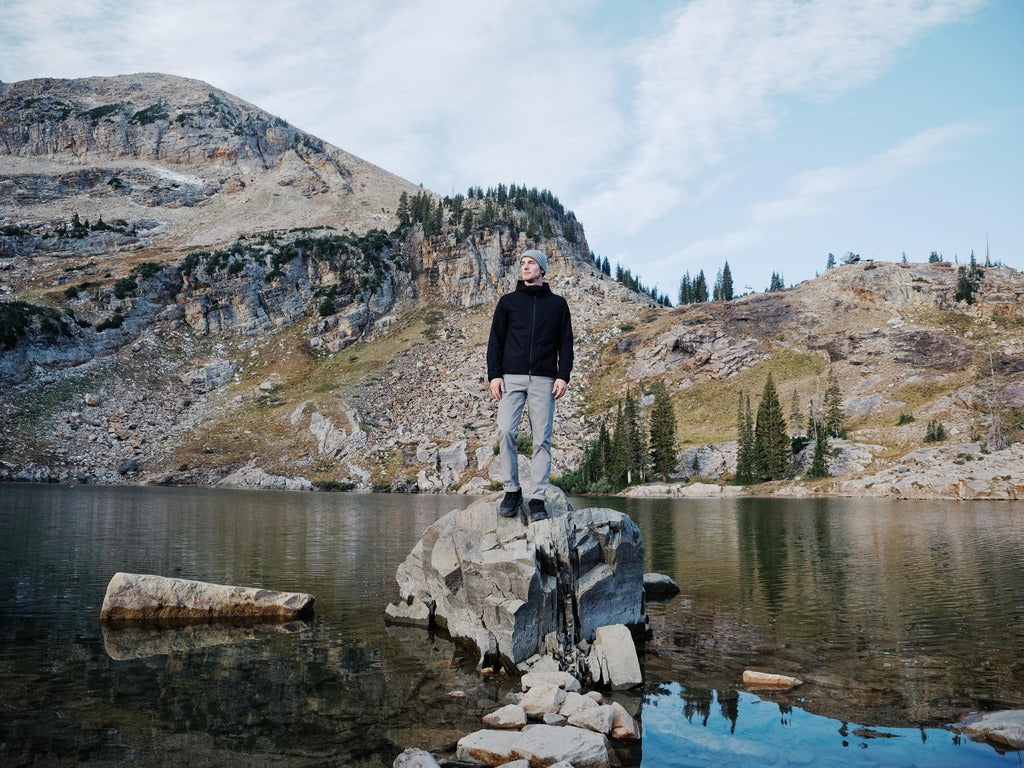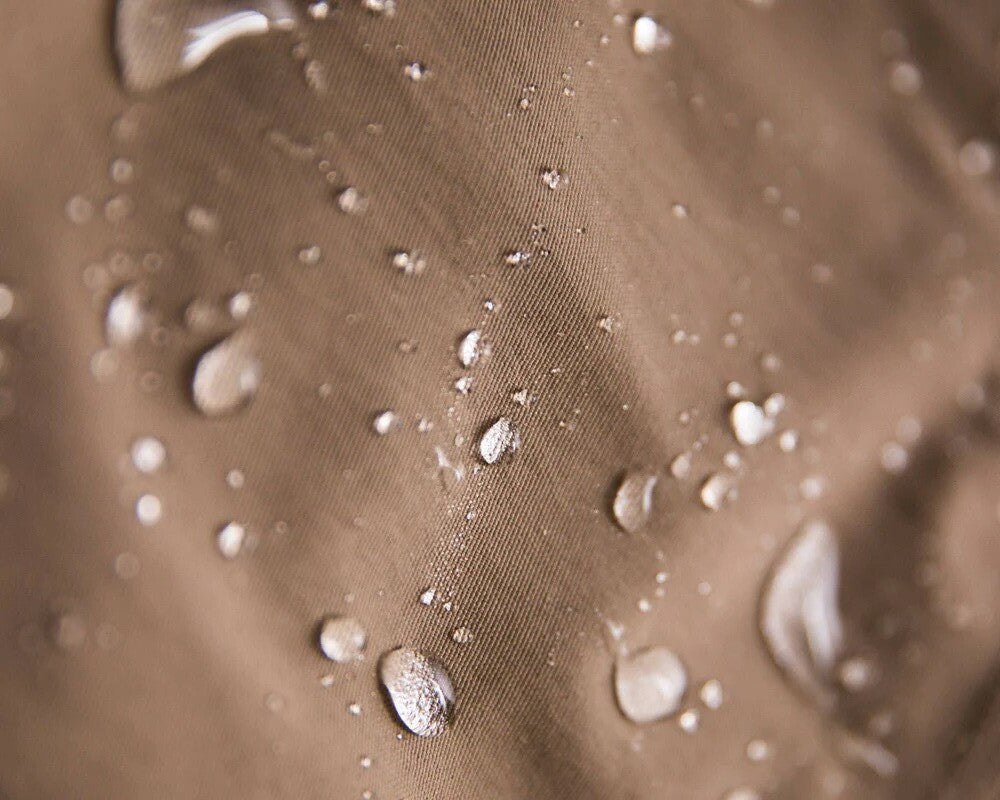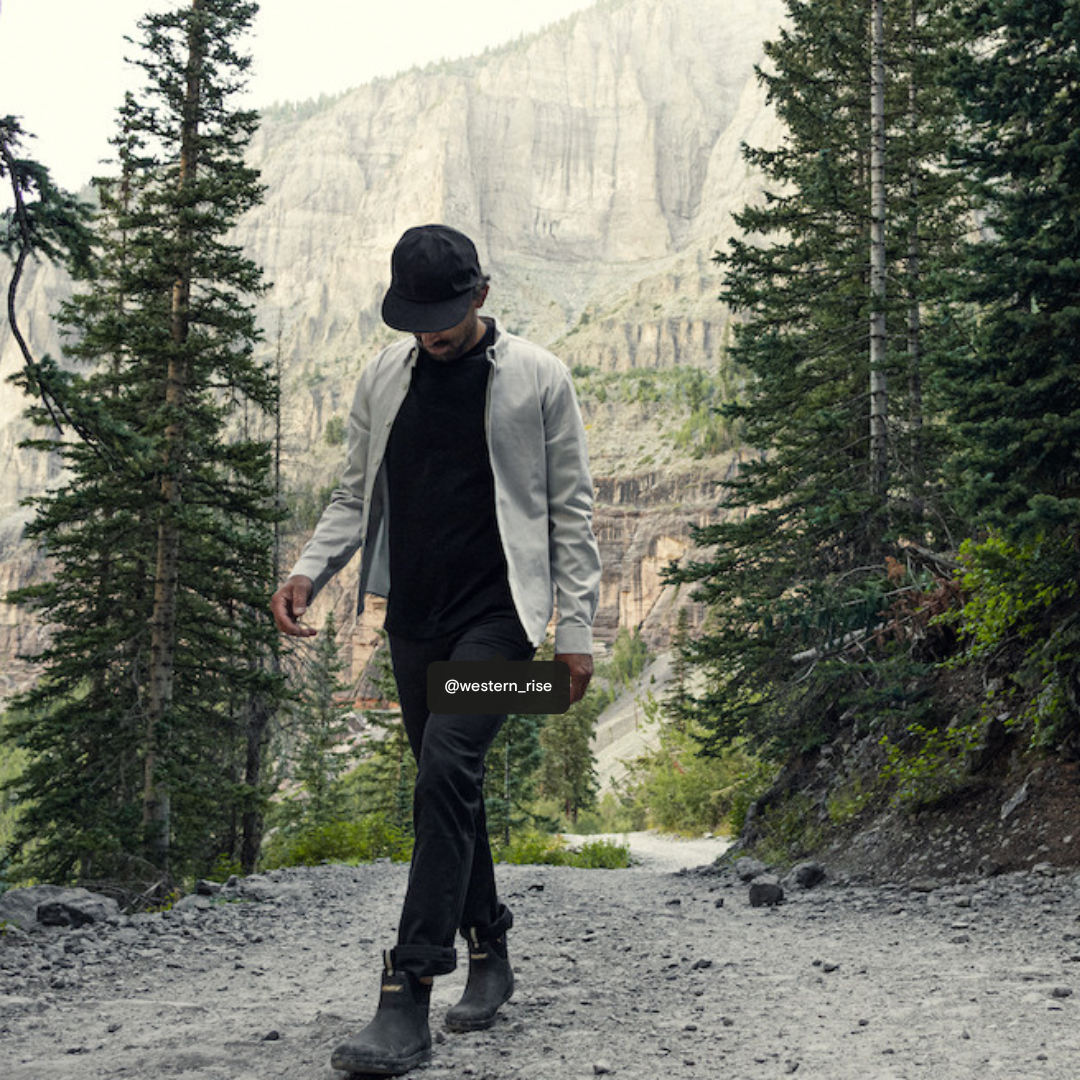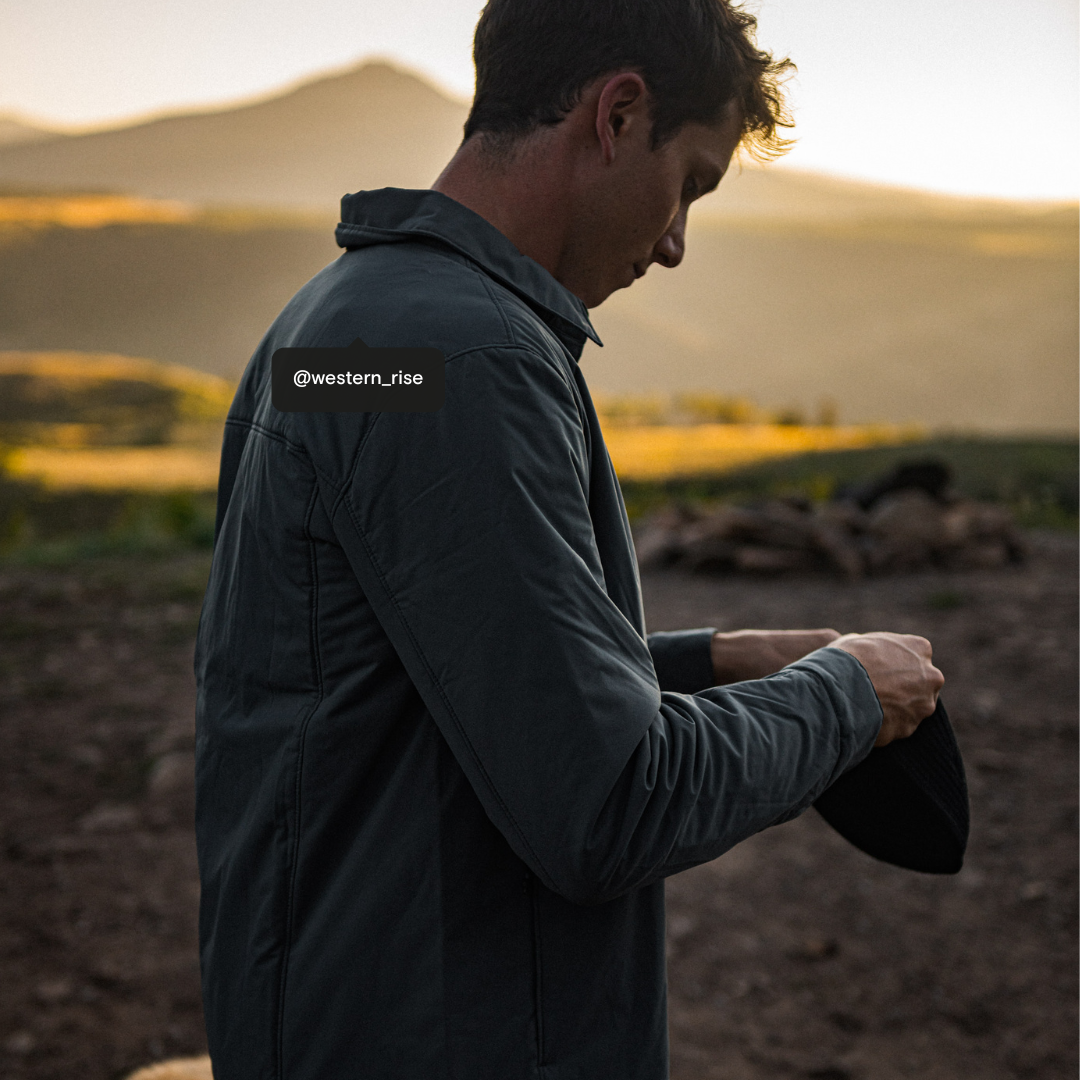A trip to the mountains requires distinctively different packing than the beach or city. We compiled a comprehensive packing list for mountain vacation and hiking of essentials for your rocky trip that will ensure you avoid overpacking, fit in like a local, and are prepared for all the activities to do and adapted to any season of the year.
Before setting off, it's important to compile a list of all the activities you plan to engage in. Ensuring that your packed items are suitable for each of these adventures is key. This may seem obvious, but daily activities in the mountains can be very different from your usual activities and season. So let’s start with a seasonal mountain packing checklist.
Winter Mountain Packing List
Winter in the mountains can be a magical experience, but it also demands thorough preparation and packing for cold-weather challenges. Expect cold temperatures, often below freezing, and snowfall. Layering is essential to manage the varying conditions throughout the day. High-quality, insulated clothing is vital when packing for the mountain trip to ensure comfort and safety.
Clothing Items:
- Heavy-Duty Insulated Jacket: Essential for sub-zero temperatures, should be waterproof and windproof.
- Durable & Waterproof Pants: For winter outdoor activities. Opt for an insulated option that offers extra warmth if you plan snow activities.
- 2-3 Sets of Thermal Base Layers: For example, merino wool long-sleeve and bottoms. Woolen base layers are recommended as they keep you warm even when wet.
- 2-3 Fleece or Wool Jackets and Flannel Overshirt: For layering above base thermal layer. While sweaters are a more casual option, an overshirt might be a dressy variant for evening.
- Heavy Wool Socks: 5-6 pairs for warmth and moisture-wicking.
- Insulated Waterproof Boots: Crucial for keeping your feet warm and dry.
- Beanie and Scarf: Opt for merino wool fabric for these accessories or added warmth.
- Waterproof Gloves or Mittens: Insulated for warmth.
- Sunglasses: To protect from snow glare.
- Face Mask or Balaclava: For wind and cold protection.
- Snow Goggles: If engaging in snow sports.
Summer Hiking Packing List
In the mountains, the days can be beautiful, sunny, and warm, but nights and mornings can get chilly. Make sure to pack appropriate travel clothing for hiking adaptable for any weather you might encounter on your trip.
If you're crafting a hiking packing list, prioritize comfort and durability in your athletic attire. Opt for materials purposed for travel clothing that wick away moisture, such as polyester and merino wool blends, which are highly recommended for their performance qualities.
Clothing Items:
- Light jacket or overshirt: Lows get down to the 50s even in the hottest months so make sure you bring a warm jacket. Shoot for something packable with insulation and water resistance.
- Raincoat: Late June through early August is monsoon season in the Rockies. Clouds roll in almost every afternoon for a few hours so a rain jacket is essential for any hiking packing list.
- 3-4 Travel t-shirts for daily wear: Merino wool tees are great for base layers or as stand-alone shirts for any casual or activities to biking and hiking. Plus their odor neutralizing properties allow more wear than a standard polyester or cotton T-shirt, meaning you can pack less.
- 1-2 Long-sleeved shirt: The sun in the mountains is intense and it can get cold at night. A long sleeve shirt is essential for intense sun or bug protection on the trail or water and insulation once the sun goes down. Choose something light and breathable like merino or cotton (without all the vents and mesh) in a style as henley variant that can be worn around town as well.
- 1-2 Multipurpose pants: Zip-off hiking pants may seem practical, but never look OK and most locals wouldn’t be caught dead in them. Skip these and bring an actual pair of pants that can be worn for outdoor activities and look ok in town. Stretch, stain-resistance, and water-resistance are preferable.
- 1-2 Hybrid shorts: To cut down on overpacking choose a pair of shorts that work for the trail, for swimming, and a concert in town. The AT Limitless Shorts are a perfect combination of performance and style.
- 4-5 pairs of Wool low socks: Wool socks are mountain stable for their heat management, padding, and odor neutralizing abilities. Bring at least two pairs of socks no matter the season.
- Sandals: Chacos are a mountain staple for their versatility for hiking and water resistance (no one ever claimed we were stylish). Trust us you will want these.
- Hiking shoes: If you are planning to hike you will likely want a pair of hiking waterproof shoes or approach shoes. They handle rocky terrain, brush, and mud better than your standard sneakers. Additionally, opting for ankle-height hiking shoes can provide extra stability on uneven terrain.
- Hat: Just bring one for sun protection.
- Swimsuit: Although we don't have beaches, the mountains have plenty of water-related activities. Pack a swimsuit for a nice day at the lake, or on the river.

Spring/Fall Hiking Trip Packing List
Spring and fall in the mountains are characterized by a significant range in temperatures, with warm days and cool to cold nights. Weather can be unpredictable, with the possibility of rain or even snow in early spring or late fall. Layering remains key, and pack for versatility.
Clothing Items:
- Versatile Rain Shell: With unpredictable weather, a good rain jacket is essential. Look for one that's lightweight and packable.
- Insulated Light Jacket or Overshirt: Evenings can get chilly, so an insulated, packable jacket with water resistance is a good choice.
- 1-2 Long-Sleeved Shirts and 1 Zipped Jacket: For protection against the sun and bugs during the day, and warmth in the evening. Opt for breathable materials that can be worn in town as well.
- 2-3 T-Shirts: Wool or cotton with polyester blends t-shirts are excellent as they are good for layering, and their odor-neutralizing properties mean you can wear them multiple times.
- 1-2 Multipurpose Pants: Choose pants that are versatile for outdoor activities and suitable for wearing in town. Look for stretch, stain-resistance, and water-resistance features.
- 1 Hybrid Shorts: That are suitable for hiking, swimming, and casual wear.
- 4-5 Pairs of Wool Socks: Wool socks are great for temperature regulation and odor control.
- Comfortable Hiking Shoes: Essential for handling varied terrains.
- Hat: To protect from the sun.
- Lightweight Gloves and Beanie: For cooler mornings and evenings.
- Scarf or Neck Gaiter: Provides extra warmth and can be used for sun protection.
In all seasons, it’s essential to be prepared for changing weather conditions and to adjust your packing list based on the specific forecasts for your destination and duration of your trip - whether it’s one-day hiking, weekend getaway or longer trip.

Now that we've covered the clothing packing list for the mountain trip, let's shift our focus to an often-overlooked aspect of packing for the mountains: the all-important toiletries.
Toiletries List
The toiletries essentials for mountain trips vary depending on whether you are staying in a hotel, car camping or backpacking. But the following items are always useful:
- Toothbrush, toothpaste & solid soap: Opt for a compact, travel-sized toothbrush, toothpaste and a small piece of solid soap suffices for cleaning clothes and body.
- Wet wipes & Paper towels: These are useful for cleaning up on a trail, before bed or just a quick refresher. Ursa Major’s wipes are refreshing and smell like mountain pine.
- Camp Towel: A light towel is great for sweat, to try off after a dip in a mountain lake, after a rainstorm.
- Hand sanitizer: It is crucial for maintaining hygiene, especially before meals or after trail activities. Choose one with moisturizing properties to prevent dry skin.
- Small cosmetic bag: Should include face cream, cotton buds, scissors, tweezers for any case and if you plan a longer than 1-day long hike.

Outdoor Protection For Mountain Trip or Hiking
When preparing a mountain trip packing list, safeguarding yourself against the elements and natural hazards is paramount. Here we'll discuss the key outdoor protection essentials to carry, ensuring your safety and comfort throughout your adventure.
- Sunscreen: 35+ SPF natural or mineral-based cream. Even if you travel in the winter
- Bug spray: If you head out on a long hike or river trip.
- Lip balm: The dry climate of the mountains will dry out your skin. Choose one with SPF.
- Bear Spray: If you're planning on camping or hiking it’s better to be safe. If you do choose to pack bear spray, you should ONLY use it if a bear is acting aggressively towards you and never use it if the bear seems uninterested in you and is minding its own business.
- A hat: A brimmed hat for sun protection is essential. For colder weather, pack a beanie for added warmth.
- Sunglasses: The sun is intense. Don’t forget some polarized sunglasses. Sunski makes some great affordable ones.
Hiking Essentials Gear
To conquer the challenges of a mountain trip, let's delve into the essential gear that will be your key to a safe and successful adventure.
- Navigation: GPS Device or Smartphone with Offline Maps: Make sure your device is fully charged and consider bringing a portable charger. Even if you plan to use a digital device, it's always safe to carry a physical map and compass as a backup.
- First Aid Kit: You can assemble it yourself from items in your medicine cabinet or buy a ready-made kit in a compact case. For the mountain trips it’s especially beneficial to take in your first aid kit the next items:
- Band-aids: Used primarily for minor cuts, scrapes, and blisters
- Blister pads, bandages and gauze: For covering wounds or blisters.
- Antiseptic Wipes: To clean injuries and prevent infection.
- Antibiotic Ointment: For minor cuts and scrapes.
- Pain Relievers: Like ibuprofen or acetaminophen.
- Allergy Medication: Antihistamines and any personal medications, such as an epinephrine auto-injector if needed.
- Tweezers: For removing splinters.
- Latex or Nitrile Gloves: For hygiene when treating wounds.
- Headlamp: Whether you’re staying in town or camping a headlamp is always useful. You can always use it as a bike light, for night-time activities or emergencies if needed. Choose a headlamp with adjustable brightness settings and a comfortable strap.
- Battery Pack to charge phone/devices: Opt for a model with multiple USB ports to charge several devices simultaneously. Consider a solar-powered charger for longer trips where electrical outlets may not be available.
- Power Strip: A compact power strip is useful for charging multiple devices, especially in lodgings with limited outlets. Look for one with surge protection and USB ports.
- Umbrella: Protects not only against rain but can also offer shade from intense mountain sun. Choose one that is lightweight and durable.
- Cooler: A compact, portable cooler is great for day trips to keep food and drinks cool, especially during summer trips.
- Laundry detergent & Laundry bag or bag for dirty clothes: Small, travel-sized packets or a concentrated formula, while a separate bag for dirty clothes helps keep your belongings organized and clean.
- 1 Carabiner: Ideal for attaching gear to your backpack, securing luggage, or organizing small items like keys. Choose a sturdy, lightweight carabiner that suits your needs.
- Foldable Rubber Cup: This compact rubber cup is versatile and can serve as a funnel or even a showerhead when needed.
- Daypack: Choose a backpack that’s lightweight yet spacious enough to carry essentials like snacks, a first-aid kit, extra clothing, and water. Comfort and fit are key, as you'll be wearing it for extended periods. Evergoods and Topo Designs both make some great daypacks that can be used outside of the mountains as well. Consider the next items to bring in your daypack:
- Navigation gear, such as a map and compass, and know how to use them to stay on marked trails.
- First aid kit should include items like band-aids, antiseptic wipes, blister treatments, pain relievers, allergy medication, and any personal medications. Compact and well-organized kits are best.
- Water Bottle or Hydration System: A durable, reusable water bottle or a hydration bladder with a drinking tube for easy access while hiking. Insulated options are great for keeping water cool.
- Extra socks: Pack 1-2 additional pairs of socks than you think you'll need. Wool or moisture-wicking fabrics are best to keep your feet dry and comfortable.
- Sun protection: A high SPF sunscreen is a must. Look for water-resistant options if you're engaging in water activities or sweating. Pack it in your daypack
- An extra shirt: Pack an additional shirt, preferably made of quick-drying, breathable fabric. Pack extra clothes in waterproof bags in your backpack to stay prepared for changing weather conditions.
- Snacks Energy Bars: High-energy, lightweight snacks like nuts, dried fruits, and energy bars are ideal. They provide quick nutrition without taking up much space or weight.
Mountain Camping Gear
When embarking on a mountain camping adventure or a trip that includes an overnight stay, it's crucial to have the right gear to ensure a safe and enjoyable experience. Consider the following items into your mountain checklist:
- Backpacking tent: A high-quality backpacking tent is vital. It should be lightweight, easy to set up, and durable enough to withstand various weather conditions. Consider the number of occupants and the balance between comfort and portability.
- Hiking poles: Hiking or trekking poles reduce the impact on knees during descents and provide additional stability on uneven terrain. Opt for poles that are adjustable in length and made from lightweight materials like carbon fiber or aluminum.
- Sleeping bag & sleeping pads / inflatable pillows: Choose a sleeping bag suitable for the temperature range you expect. Look for features like a draft collar, hood, and zipper baffles for added warmth. Down-filled bags are warmer and more compressible but less effective when wet, while synthetic bags are bulkier but perform better in damp conditions.
- Multi-tool: A good multi-tool can include a knife, pliers, screwdrivers, scissors and other essentials in one compact package. Look for stainless steel construction for longevity and reliability.
- Rope and sacks for a bear bag: A strong, lightweight rope is useful for a variety of camping needs, including setting up a bear bag to keep food safe from wildlife. A sturdy sack for storing food and scented items, to be hung away from your sleeping area.
When packing for a camping trip, especially in the mountains, it's crucial to be prepared for a range of conditions and situations. Your gear should strike a balance between being lightweight enough for comfortable transport and robust enough to handle the demands of mountain camping. Always tailor your gear to the specifics of your trip, including duration, location, and expected weather conditions.

Food & Water For Day Hike Packing List
Even on short hikes, having snacks on hand is crucial for maintaining energy levels. They can also provide a delightful break to enjoy the surroundings.
- Pack a mix of high-energy, nutritious snacks like trail mix, nuts, energy bars, dried fruits, and jerky. Choose snacks that are lightweight, non-perishable, and easy to open and eat on the trail.
- A general guideline is about 1 Liter of water per person per hour of hiking. However, this can vary. Consider factors like hike intensity, weather conditions, personal sweat rate, age, and body type to adjust the amount of water you carry. Use a sturdy, reusable water bottle or a hydration bladder with a drinking tube for convenient access while hiking.

Cookware and Utensils [Optional] For Mountain Vacation
For a fulfilling culinary experience during your mountain adventure, here's a list of key items to pack for convenient and enjoyable outdoor cooking:
- Reusable cutlery: Opt for utensils made from materials like stainless steel or bamboo. These are not only better for the environment but also more durable than plastic. Consider a travel cutlery set that comes in a compact case for easy transport and cleanliness.
- A cast-iron skillet or pot: A cast-iron skillet is perfect for cooking over a campfire or on a cabin stove. It’s great for everything from frying eggs to making a campfire stew. Remember to bring a protective mitt and the necessary cleaning supplies, as cast-iron requires specific maintenance.
- Portable Stove or Grill: If you’re not comfortable with a campfire, a portable stove or a small grill can be a great alternative. Ensure you have the appropriate fuel type (propane, butane, etc.) for your device.
- Cooking ingredients if you plan on making meals: Plan your meals in advance and pack accordingly. Use sealable containers or bags to keep ingredients fresh and organized. Ideal food choices include items like pasta, instant rice, and dehydrated meals, which are lightweight and easy to cook. For protein, consider options like canned tuna, beans, or pre-cooked and vacuum-sealed meats. Also, versatile ingredients like tortillas can be used for wraps or as a side for soups and stews, offering flexibility in your meal planning.
- Charcoal and lighter fluid if your cabin comes with a charcoal grill: If your cabin comes with a charcoal grill, bring enough charcoal and lighter fluid for your planned meals.
- Trash bags: Always pack enough trash bags to carry out what you bring in, adhering to the leave-no-trace principles. Consider separate bags for recyclables to ensure proper disposal.
- Coffee filters and grounds: For coffee lovers, don’t forget your favorite coffee grounds and filters. Keep coffee grounds in an airtight container to maintain freshness.

Always adjust your food and water needs based on the specific details of your trip, and remember, being a little over-prepared is better than being under-prepared, especially in remote or challenging environments.
Packing Tips For Mountain Vacation & Hiking
Packing for a mountain trip requires thoughtful packing to ensure both comfort and preparedness. Here are some key tips to pack light and efficiently:
- Choose the Right Backpack:
Start with a durable backpack that is the right size for your one-bag trip. It should have multiple compartments for efficient organization, allowing you to pack all your gear without leaving too much empty space or overstuffing.
- Smart Packing Technique:
Organize your clothes and gear vertically, rather than stacking them. This approach lets you see and access everything in your pack easily, reducing the need to unpack everything to find a single item.
- Activity-Based Packing:
Align your gear and travel wardrobe with the specific activities you plan to undertake. For instance, if you're hiking, ensure you have comfortable, durable footwear and trekking poles. If you're planning to camp, include necessary camping gear like a tent, sleeping bag, and cooking equipment.
- Plan for the Weather:
Always check the weather forecast for your destination ahead of time. Pack wind and waterproof clothing and gear that will keep you comfortable in the expected conditions, whether it's hot, cold, rainy, or snowy. Remember, mountain weather can be unpredictable, so include versatile items that can handle a range of conditions.
Aim for a lightweight backpack to ease your load during hikes. Prioritize essential items and multi-functional gear to maximize space and efficiency.
Layer Your Clothing:
The mountain weather can be unpredictable, so include layers you can easily add or remove. This should include moisture-wicking base layers, insulating mid-layers, and a waterproof outer layer.
- Choose the Right Footwear:
Your shoes are your foundation. Depending on the terrain, select either sturdy hiking boots for rough trails or lighter hiking shoes for well-maintained paths. Break them in before your trip.
- Emergency Whistle and Light:
Pack a whistle for signaling in case of emergency and a headlamp or flashlight with extra batteries for any low-light situations.
- Sustainable Practices:
Bring reusable water bottles and utensils to minimize waste. Pack out what you pack in, respecting the natural environment.
- Wildlife Safety:
In areas with wildlife, educate yourself on safety protocols. Bear spray or containers for food storage may be necessary.
- Local Regulations and Permits:
Check if your destination requires any permits or adheres to specific regulations, especially for camping or fishing.
By following these packing tips, you can ensure that you're well-prepared for various scenarios you might encounter on your mountain adventure, making your experience both enjoyable and safe.

Sum up
Our packing list for mountain vacation aims to equip you with the knowledge for a well-prepared adventure. Feel free to tailor it to your specific destination and needs. Embrace packing light and enjoy your exhilarating journey into the mountains!










